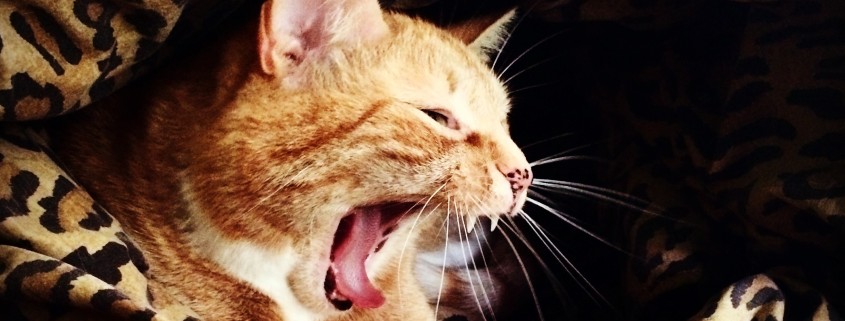Aggression in Cats
Cats are soft, cuddly and worshiped by the internet for their gut-wrenching cuteness, but cats have their bad days too. Don’t let their small size fool you – cats can be very dangerous if something sets them off. If your cat is demonstrating aggressive behavior, the first thing you should do is bring them to the vet to make sure there is not an underlying problem that is causing them pain. Cats may show aggressive behavior to guard their territory, protect themselves when they feel frightened or because they are stressed by changes to their environment. Pay attention to your cat’s body language because you will usually be able to detect if your cat is upset before they act out. Cats will usually defend themselves with their claws so cats that are declawed often resort to more drastic behaviors such as biting if they feel threatened.
Aggressive Body Language:
- Intense stare
- Flattened ears
- Hackles up / tail puffed out
- Growling, yowling, hissing, spitting
- Pupils dilated
If your cat has aggressive tendencies, pay attention to what is going on to trigger the behavior. Most cats are not mean by nature so if you can determine what activities, noises or animals upset them you can manage their behavior. Most cases of cat aggression are caused by a cat feeling fearful, threatened or territorial. Some cats get riled up from rough play and others simply need their space. Talk to your veterinarian or a trusted animal behaviorist to find training techniques or medications that will help sooth your cat so we can all get along.
Studies
Social interaction in cats: regional brain monoamine distribution in dominant and submissive cats.
Habituation of the threatening response in cats and kittens.
Midbrain interaction with the hypothalamus in expression of aggressive behavior in cats.
Behavior profiles of feline breeds in Japan.
Clinical trial of a feline pheromone analogue for feline urine marking.
Inhibitory control of the defense-aggression reaction including its cardiovascular components.
Injuries due to human and animal aggression in humans.


